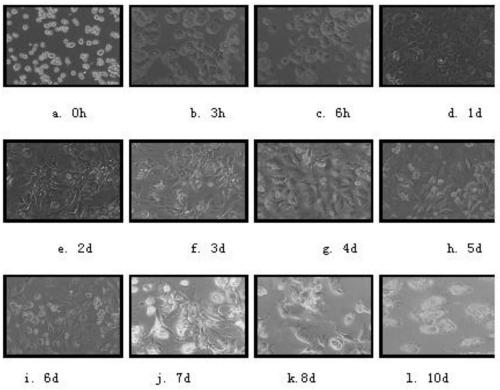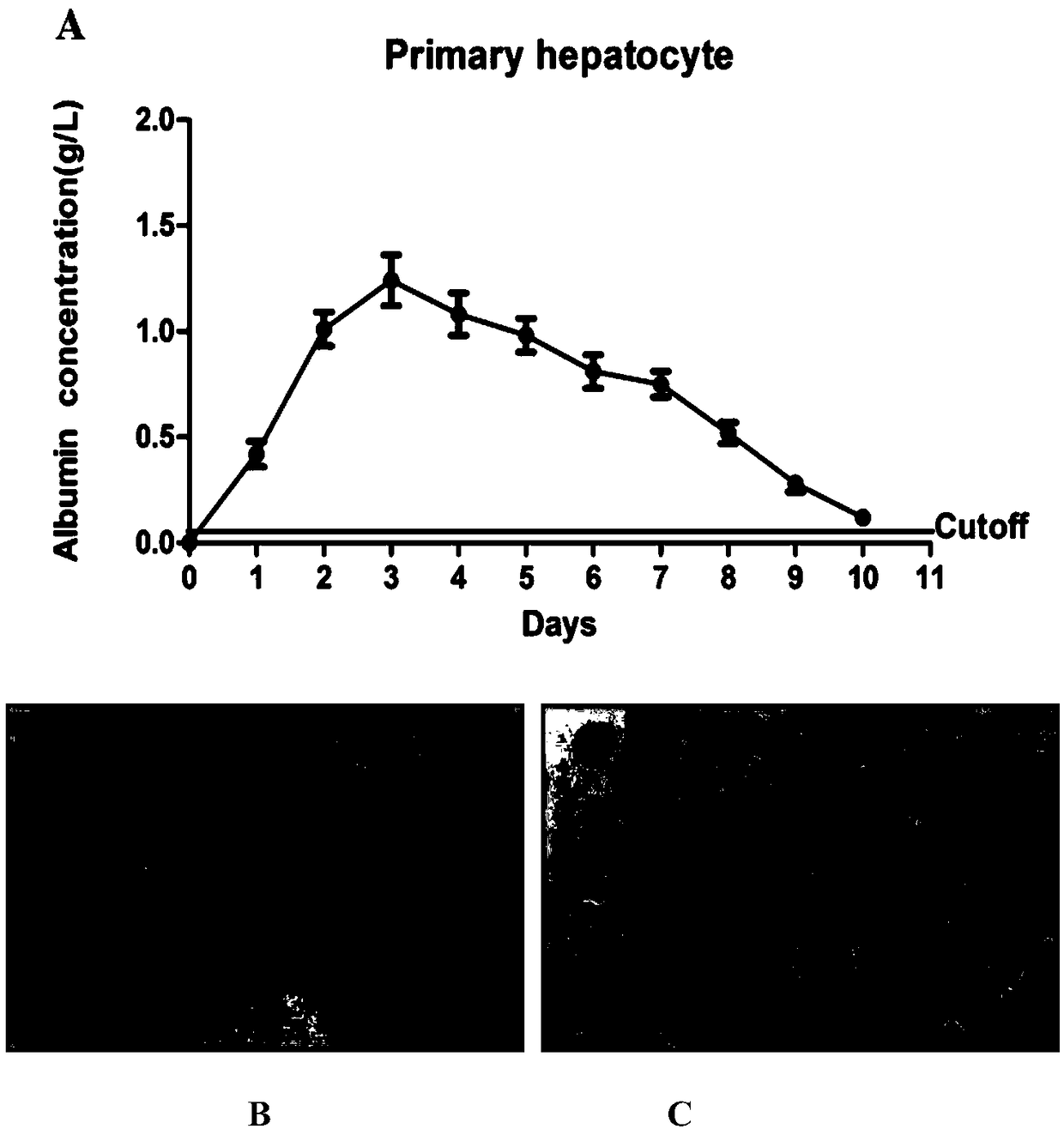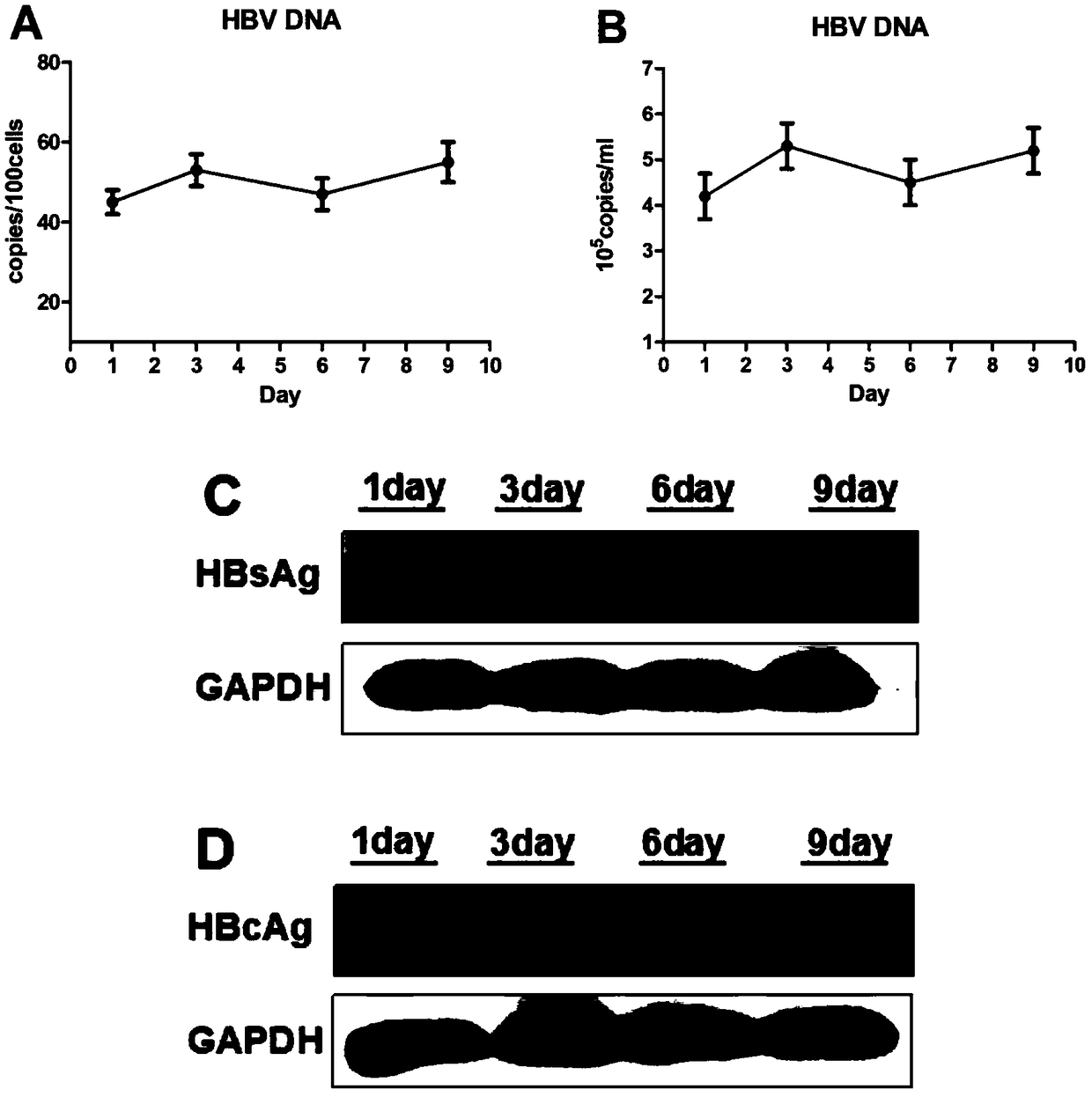Method for separating, culturing and identifying primary hepatocytes of HBV transgenic mouse
A technology of primary hepatocytes and transgenic mice, applied in the biological field, can solve the problems of less research and achieve the effect of high cell viability
- Summary
- Abstract
- Description
- Claims
- Application Information
AI Technical Summary
Problems solved by technology
Method used
Image
Examples
Embodiment 1
[0083] Example 1 Isolation and culture method of HBV transgenic mouse primary hepatocytes
[0084] ① Select suitable experimental mice (HBV transgenic mice) for the experiment, first disinfect the entire abdomen of the mice with 75% alcohol, and then inject 0.2ml of 1000units / ml heparin solution into the experimental mice by intraperitoneal injection After it is completely absorbed, inject 0.1ml of 2.5% pentobarbital sodium solution into its abdominal cavity to anesthetize the mouse, and finally fix the mouse on the operating board in the ultra-clean table (the whole process is aseptic operation) ready for use;
[0085] ②Use the sterilized ophthalmic scissors and ophthalmic forceps to carefully open the abdominal cavity of the mouse, dissect and free the upper and lower ends of the inferior vena cava close to the liver, and place a sterile surgical suture in the upper part of the liver of the inferior vena cava (for later ligation), and then use a new sterile indwelling needl...
Embodiment 2
[0089] Example 2 Identification method of HBV transgenic mouse primary hepatocytes
[0090] ① Detection of mouse primary hepatocyte albumin:
[0091] Firstly, the mouse primary hepatocytes were cultured for 24 hours, and then carefully washed with sterile PBS buffer (5min, repeated 3 times), the cell slides were taken out, and after drying, 5% paraformaldehyde was added dropwise. Make mouse primary hepatocytes fixed for 30min;
[0092] Then carefully wash the above-mentioned cell slides with sterile PBS buffer (5min, repeat 3 times), take out the cell slides and incubate them in a 3% filter prepared with sterile PBS after drying. hydrogen peroxide solution until no bubbles are produced in the cell slide;
[0093] Then carefully wash the above-mentioned cell slides with sterile PBS buffer (5min, repeat 3 times), take out the cell slides and incubate them in normal goat serum working solution (incubate at room temperature for 15 minutes) after drying. After discarding the wor...
Embodiment 3
[0105] Example 3 Morphological Identification Results of HBV Transgenic Mouse Primary Hepatocytes
[0106] The freshly isolated HBV transgenic mouse primary hepatocytes were inoculated on a cell culture dish. It can be seen under the microscope that most of the suspended HBV transgenic mouse primary hepatocytes are in the shape of crystal clear three-dimensional single balls, and a few aggregates can also be seen Arranged in clusters. After 3 hours, the primary hepatocytes of HBV transgenic mice have been uniformly dispersed and attached to the bottom of the cell culture dish. At this time, the typical structural characteristics of double nuclei of primary hepatocytes of HBV transgenic mice can be seen, and the cells are round or oval. 6 hours later, the double nuclei in the primary liver cells of HBV transgenic mice were more obvious, the intercellular space was larger, and the nuclei under a high-magnification microscope The kernels are clearly visible, the cells adhere mor...
PUM
 Login to View More
Login to View More Abstract
Description
Claims
Application Information
 Login to View More
Login to View More - R&D
- Intellectual Property
- Life Sciences
- Materials
- Tech Scout
- Unparalleled Data Quality
- Higher Quality Content
- 60% Fewer Hallucinations
Browse by: Latest US Patents, China's latest patents, Technical Efficacy Thesaurus, Application Domain, Technology Topic, Popular Technical Reports.
© 2025 PatSnap. All rights reserved.Legal|Privacy policy|Modern Slavery Act Transparency Statement|Sitemap|About US| Contact US: help@patsnap.com



